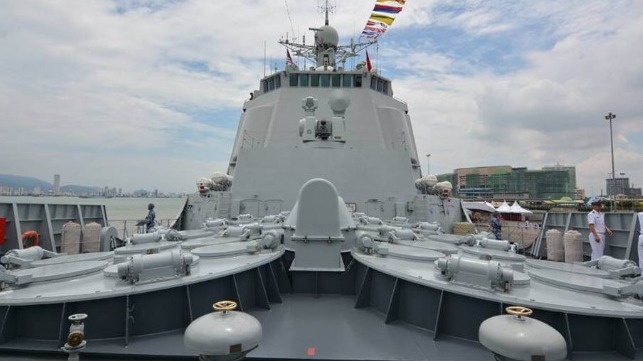Report: China is On Course to Overtake America's Naval Capabilities

A global shift in naval capabilities could be in the offing, with China’s massive navy modernization ambitions threatening the dominance of the U.S. - a development that puts Washington’s ability to control global waters at risk.
The Congressional Research Service (CRS) has warned that going by the rate at which China is modernizing its navy, coupled by the U.S procrastination in navy investments, Beijing is on course to overtake the U.S in terms of naval capabilities.
Apart from threatening the U.S naval dominance, the U.S could lose the abilities to achieve and maintain wartime control of ocean areas in the Western Pacific, the first such challenge the U.S. Navy has faced since the end of the Cold War. Already, there are concerns that the U.S has lost the naval balance of power, specifically in the South China Sea, with China drawing even with or even surpassing the U.S. Navy's capabilities.
“The United States today has more naval capability overall but China’s naval modernization effort since the 1990s has substantially reduced the U.S. advantage, and if current U.S. and Chinese naval capability trends do not change, China might eventually draw even with or surpass the United States in overall naval capability,” stated CRS in a report.
The report - titled China Naval Modernization: Implications for U.S. Navy Capabilities—Background and Issues for Congress - is aimed at helping Congress decide on whether to approve, reject, or modify the Biden administration’s proposed U.S. Navy plans, budgets and programs in order to respond to China. The Biden administration has proposed a $180.5 billion budget for the navy in the 2023 financial year, a 4.8 percent increase from last year.
The report finds that while China is expected to field 420 ships by 2025 and 460 ships by 2030, the goal of the current U.S Navy shipbuilding plan is for a fleet of 355, with no set date for achieving it.
The U.S Navy still fields more tonnage in terms of bigger and heavier armed ships (like guided missile destroyers and cruisers) compared with China. The ships give the U.S a significant edge in cruise missile launch capability.
The report shows that the U.S has more than 9,000 vertical launch missile cells on its surface ships compared to China’s around 1,000. More critically, the U.S attack submarine fleet of 50 ships is entirely nuclear powered, giving it significant range and endurance advantages over a Chinese fleet that has just seven nuclear-powered submarines in its fleet of 62.
In short, the U.S. Navy currently has many more aircraft carriers, nuclear-powered submarines, and cruisers and destroyers while China’s navy currently has many more diesel attack submarines, frigates and corvettes.
Though the ultimate size and composition of China’s navy is not publicly known because China does not release a navy force-level goal or detailed information, over the past three decades the country has invested heavily in naval modernization efforts. These cut across a wide array of ships, aircrafts, weaponry and C4ISR (command and control, communications, computers, intelligence, surveillance, and reconnaissance). The nation has also invested in the improvements of logistics, doctrine, personnel quality, education and training, and exercises.
Beijing’s military modernization efforts, including its naval modernization effort, is assessed as being aimed at developing capabilities for, among other things, addressing the situation with Taiwan militarily and achieving a greater degree of control or domination over China’s near-seas region, particularly the South China Sea. The nation's newfound sea power could also be used to defend its sea lines of communication to the Persian Gulf, where China obtains the largest share of its energy supply.
Although modernization efforts have substantially improved China’s naval capabilities, the country’s navy is still limited by several factors, according to CRS. These include limitations in antisubmarine warfare, long-range targeting, at-sea resupply of combatant ships operating far from home waters, and a limited number of overseas bases and support facilities.
The opinions expressed herein are the author's and not necessarily those of The Maritime Executive.
